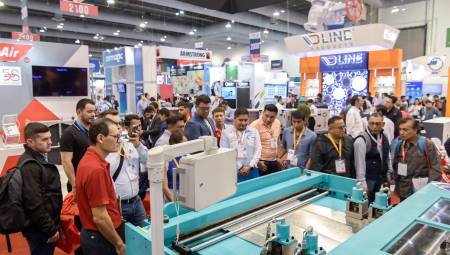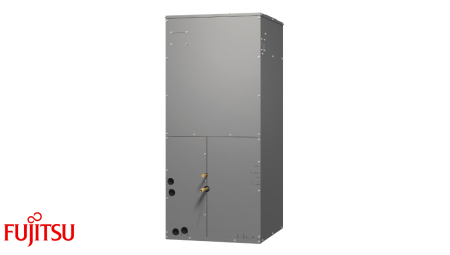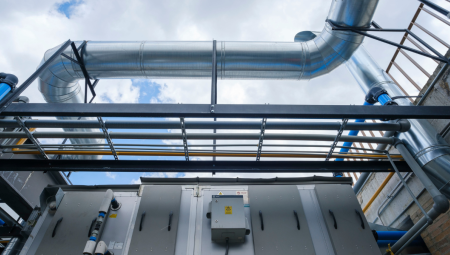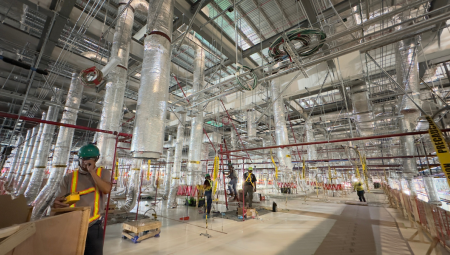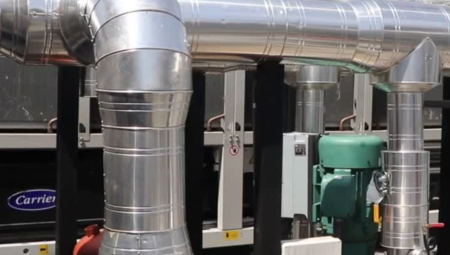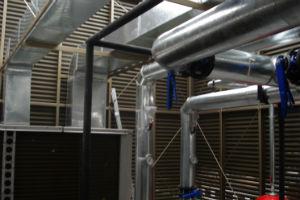 In the next column we will put aside computer advances and go back to the age of books, when an engineer racked his head for hours trying to solve equations and find answers.
by Camilo Botero*
In the next column we will put aside computer advances and go back to the age of books, when an engineer racked his head for hours trying to solve equations and find answers.
by Camilo Botero*
When an engineer is going to design an air conditioning and ventilation system for example in a tropical climate region, he must establish what the thermal load will be, that is, the amount of energy in the form of heat, which he must remove.
Initially the professional defines the psychrometric situation for the particular case and faces a task that today seems simple due to aids and computer advances, but in reality it is of great complexity.
For example, despite the evolution of technology, it is not easy to estimate the values for the different sensitive heats (energy that is transmitted by temperature differences), which participate in that total energy that must be removed from the environment, to achieve conditions of human comfort or for a certain industrial process.
How to calculate thermal load is the issue at hand today. This is technical and extensive information, so it will be complemented in future editions of ACR LATINOAMÉRICA.
To agree on the terminology that we will use in the future, it is necessary to define some concepts that will be mentioned in this and in the following installments.
- Thermodynamics and heat transfer: the difference between these two concepts is that the first deals fundamentally with states in equilibrium, and the second represents a situation of imbalance because it is a consequence of the temperature difference.
- Heat: is the energy that is transferred due to a temperature differential. All heat flow processes follow the first and second laws of thermodynamics.
Forms of heat flow
Heat flow, which is generated by a temperature difference, can occur in three basic forms, although in thermal load calculation applications for air conditioning they are generally not seen in isolation; these are:
Conduction: this flow of heat takes place between two bodies, or between two parts of the same body, as the product of a molecular interaction, between those of higher energy (higher temperature) and those of lower energy (lower temperature), since the kinetic energy of the molecules is proportional to their temperature.
Radiation: This phenomenon is performed in the form of electromagnetic waves and does not need a physical medium for the transport of energy. When temperatures are high it has great importance because it is proportional to the fourth power of the temperature.
Convection: This is a combined process of energy transport, energy storage and matter transport. It is performed between solids and fluids.
In solving heat transfer problems, it should not only be known the type of heat flow, but also whether the process is:
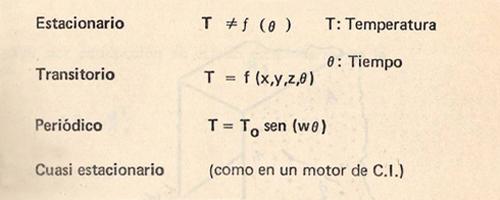 Let's go to the numbers
Let's go to the numbers
In my years of experience there are many people who come to me to consult technical details, calculations, formulas and equations that must be applied, in this particular case to establish heat transfer. Therefore, below I will detail the equations that should be used in this topic.
Conduction: The equation that governs conduction is called the Fourier equation and has the following expression for the simplest case which is the steady-state, one-dimensional on a flat plate.
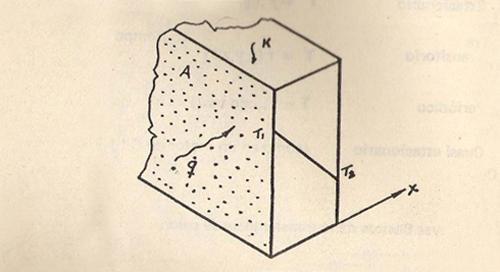 Nomenclature for the Fourier equation.
The appearance of the minus sign is due to the convention that heat is positive if it is performed in the direction of the x-axis.
Nomenclature for the Fourier equation.
The appearance of the minus sign is due to the convention that heat is positive if it is performed in the direction of the x-axis.
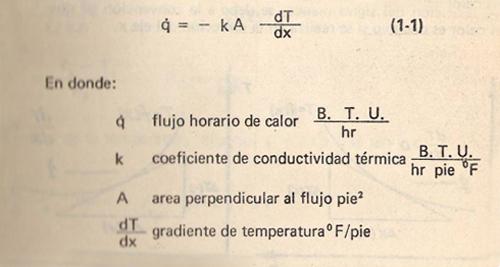 Justification of the minus sign in q = - kA dT / dx
Justification of the minus sign in q = - kA dT / dx
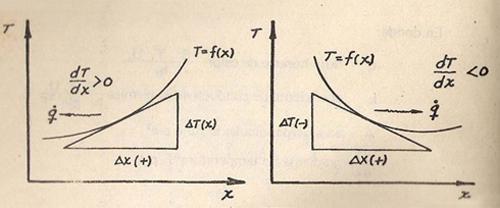 Measure thermal conductivity
Measure thermal conductivity
Thermal conductivity (k) can be said to be the amount of heat per unit time, area and gradient, which is conducted through a solid.
 This definition suggests a method for measuring k.
Let be a specimen of sectional area A and length ∆x: if an amount of heat is introduced into one side and extracted on the other, and if this heat flow is measured during the steady state and the temperature difference between the two faces, from the above equation the value of k is calculated.
A computer performing the above operation would be:
This definition suggests a method for measuring k.
Let be a specimen of sectional area A and length ∆x: if an amount of heat is introduced into one side and extracted on the other, and if this heat flow is measured during the steady state and the temperature difference between the two faces, from the above equation the value of k is calculated.
A computer performing the above operation would be:
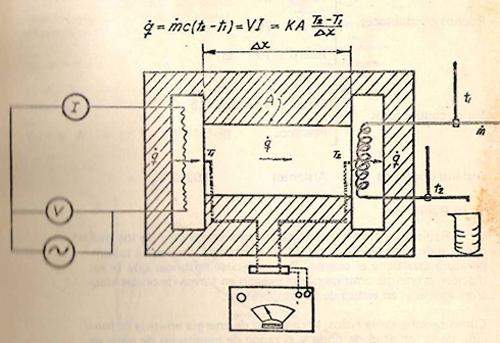 The principle on which a k meter operates is to make the energy and mass balances for the process of converting electrical energy to heat transfer by conduction and finally to the heating of a water flow.
The principle on which a k meter operates is to make the energy and mass balances for the process of converting electrical energy to heat transfer by conduction and finally to the heating of a water flow.
Typical values of conductivity are: ( B.T.U. / hr foot ºF ).
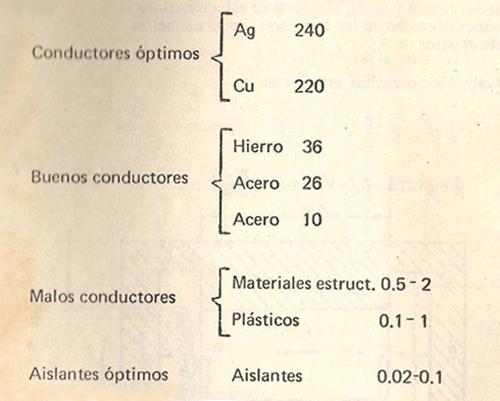 Thermal Radiation
Thermal Radiation
It can be said that radiation is energy emitted by the body in the form of electromagnetic waves by virtue of its temperature.
As is known from physics, the amount of energy emitted as a function of wavelength is between 0.1μ and 100μ.
For a given temperature, the total maximum energy emitted, at all wavelengths is:
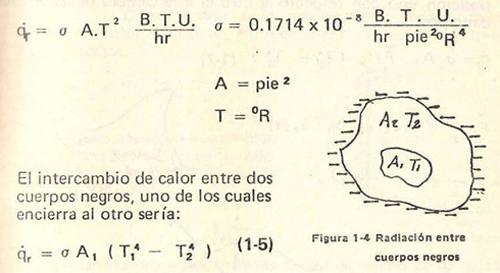 If A1 were a gray body; that is, if its energy emission is a fraction with the maximum energy emitted.
If A1 were a gray body; that is, if its energy emission is a fraction with the maximum energy emitted.
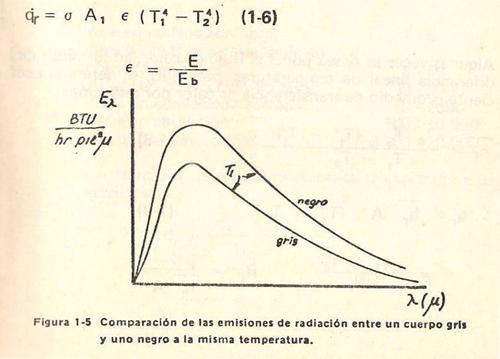 Now, if it is two gray bodies, which have a certain position one with respect to the other the heat exchange is given by:
Now, if it is two gray bodies, which have a certain position one with respect to the other the heat exchange is given by:
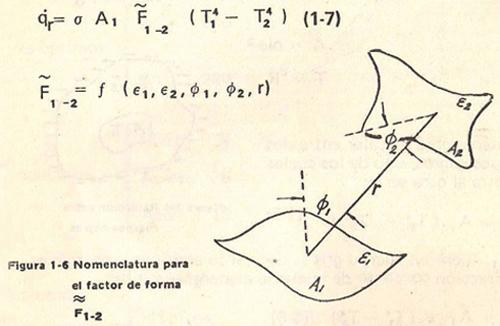 Sometimes you want to put the heat flow in terms of the linear difference in temperatures, for this you define the average coefficient of heat transfer by radiation:
Sometimes you want to put the heat flow in terms of the linear difference in temperatures, for this you define the average coefficient of heat transfer by radiation:
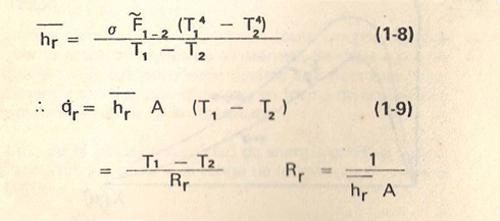 Convection
Convection
As stated, it is a combined process of molecular heat transfer; energy storage and mass transport.
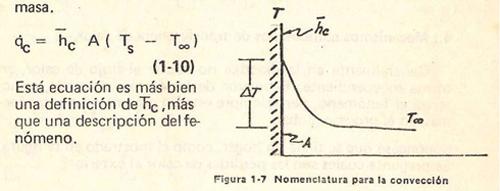 A chart showing the ranks of the most important hc would be:
A chart showing the ranks of the most important hc would be:
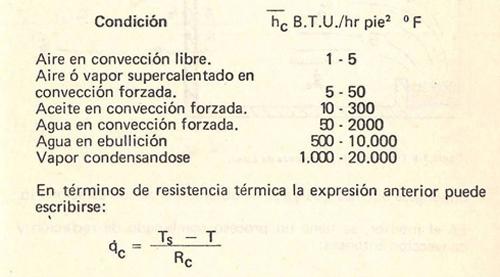 To conclude
To conclude
With the advent of thermal load calculation software, a distraction sophistry has been created making this calculation look easy.
It is said: "The only thing to do is to put the data and the software gives me the result!"
The reality is that these software are based on hour-by-hour climate data that we do not have in our region and on global heat transfer coefficients that also do not correspond to local construction materials and of which we do not have those values. In addition, the solar radiation data used is not that of the site.
Therefore, I invite my colleagues to go back to their excellent heat transfer books, and remember these basic principles outlined here in a simple way.
No doubt you will remember the hours and hours they spent trying to solve some problem that involved the solution of the general driving equation, which were invested in solving an equation with the help of differential and integral calculations with three position coordinates and the time variable and perhaps with internal heat generation.
Perhaps the solution of a Bessel equation for fin calculation to improve the performance of heat exchangers or the calculation of a form factor, with multiple integrals, will come back to their minds.
Then they will come to the conclusion that heat transfer was one of the subjects of our career that represented the most difficulty for us.
Fortunately in practical life we are left with linear, steady-state and one-dimensional equations. Deo Gratias!
* Camilo Botero is the current Secretary of the Federation of Ibero-American Associations of Air Conditioning and Refrigeration - FAIAR; he was president of ACAIRE and is president of Camilo Botero Ingenieros Consultores Ltda. He has worked as a teacher in several Colombian universities, guilds and currently in ACAIRE in diploma courses of air conditioning projects, energy efficiency in air conditioning and refrigeration, cogeneration and trigeneration, applied psychometrics, thermodynamics, fluid mechanics, heat transfer and turbomachinery.







